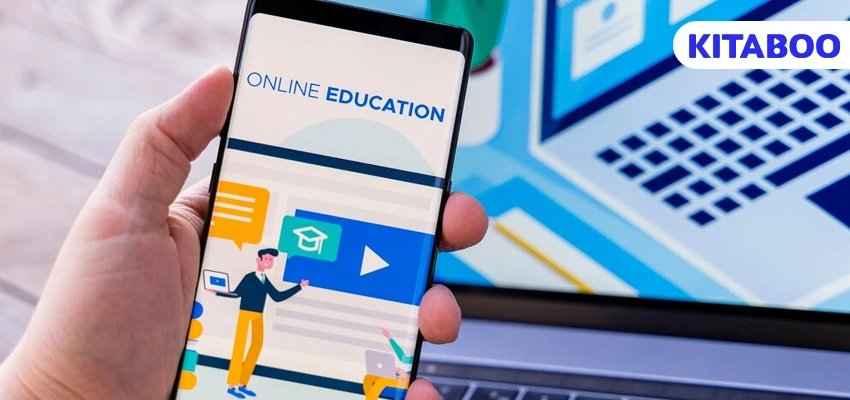
The Role of Digital Platforms in Promoting Inclusive Education
Summarize this blog with your favorite AI:
The rapid evolution of technology has ushered in an age where everything is becoming more and more connected. The education sector has also joined this technological party, so much so that digital learning has emerged as a powerful tool for creating learning environments that are more inclusive and accessible for all learners.
Unfortunately, UNESCO recently published a report indicating that over half a billion students cannot access learning through remote digital learning resources. This tells us that the digital divide poses a big issue in education due to widening inequalities and stopping social advancement. What it also signals is that we need to use technology in a manner that every learner has equal opportunities to learn and grow, irrespective of socioeconomic background or disability.
To bridge this gap, digital platforms have entered the fray with the aim of making every learner succeed and building learning environments geared toward the diverse needs of all learners. This blog will explore how.
Let’s begin!
Table of Contents:
I. The Importance of Inclusive Education
II. Challenges in Inclusive Education
III. The Role of Digital Platforms
IV. Teacher Training and Professional Development: A Pillar of Inclusive Education
V. Cultural Competence and Sensitivity: Creating Inclusive Learning Environments
VI. Wrapping Up
The Importance of Inclusive Education
Inclusive education is a basic human right, ensuring that every child coming from different walks of life and with varying abilities has unrestricted, quality access to education. This fundamentally allows the students to be successful in the school setting, helping them gain self-esteem and contribute meaningfully to society.
Inclusive education has positive academic and social impacts. As a study from NCBI shows, an inclusive classroom enhances the overall performance of students both with and without disabilities. Furthermore, it contributes to social cohesion, tolerance, and empathy, ensuring a better society.
By embracing inclusion, we create school rooms that look and feel inclusive and are appreciated by every student who ends up there. While this may further contribute to better grades, socially and emotionally, students will grow and develop with expanded critical thinking and a sense of belonging.
Challenges in Inclusive Education
Although great strides have been made, important challenges yet accompany the goal of fully inclusive education. Among these are:
- Access to Other Resources is Restricted: For many students, especially those from disadvantaged backgrounds, textbooks, workbooks, digital devices, and other learning materials remain unaffordable. Such digital divides affect their learning and limit their development.
- Qualified Teachers: Teachers may not have the expertise to help students with disabilities, who use a different language, or who have learning differences. Proper teacher training is required to ensure quality teaching for all pupils.
- Physical and Sensory Barriers: More often than not, students with disabilities face some sort of physical or sensory barriers that prevent them from getting education in typical learning environments. For example, inaccessible classrooms, little provision of appropriate assistive technology, and lack of support services become extremely challenging.
The Role of Digital Platforms
Digital platforms like KITABOO have the potential to transform and better inclusive education. Once educators start to use these platforms, they are better equipped to create more personalized, accessible, and engaging learning experiences.
1. Personalized Learning
Digital platforms tailor instruction to each student’s individual needs. Adaptive learning technologies can adjust the difficulty level of content, providing support for struggling learners and challenging advanced students.
A recent study found that A-driven personalized learning can significantly improve student outcomes by up to 30%.
2. Accessibility Features
Digital materials can be easily adapted to meet the needs of students with disabilities. Features such as text-to-speech, screen readers, and adjustable font sizes can enhance digital learning accessibility.
Additionally, digital platforms can provide alternative formats of content, such as Braille and audio recordings, to cater to a wider range of learners.
3. Collaborative Learning
Digital platforms facilitate collaborative learning, allowing students to work together on projects and share ideas. This can be particularly beneficial for students with social or communication difficulties.
Teacher Training and Professional Development: A Pillar of Inclusive Education
One integral aspect required to fully ascertain the potential of digital platforms in offering inclusive education is to invest in broad teacher training and development. That way, educators will be given the required skills and knowledge to prepare an inclusive and effective learning environment.
1. Digital Literacy
Teachers must be digitally literate. The skills to acquire include using learning management systems, interactive whiteboards, and online assessment tools to support effective teaching.
Such digital literacy would enable teachers to engage their students more easily, differentiate instruction, and create personalized learning experiences.
2. Inclusive Pedagogy
Training on inclusive teaching is essential to creating an inviting and supportive classroom environment for all learners. Differentiation, whereby teaching is customized and suited to the different needs of various students, has been considered an effective way of promoting inclusion.
Universal Design for Learning is another essential framework for designing flexible learning environments accessible to everyone.
3. Accessibility Training
Knowledge of assistive technology is always required to support students with disabilities. Teachers need to be trained on how to use a wide range of digital learning accessibility technologies, including screen readers, speech-to-text software, and alternative input devices.
Through such tools, learning can be made more inclusive and equitable for every learner in the classroom.
Cultural Competence and Sensitivity: Creating Inclusive Learning Environments
Inclusive learning environments should be culturally competent and sensitive. This means being aware of and valuing the existence of diversified cultures in order to create a welcoming and respectful learning environment for every student.
Let’s see how digital learning platforms help in this regard:
1. Culturally Responsive Teaching
Culturally responsive teaching is the practice of combining culturally relevant material and teaching strategies into instruction. This allows students to connect the content to their lives and develop a stronger sense of cultural identity.
Digital learning platforms enable teachers to use more culturally relevant examples, stories, and literature, leading to a richer and more impactful learning experience.
2. Language Support
Language support is an important intervention for students who are not learning in their native language. This could be explicit language teaching, reduced-load language, or even visual support. Proper language support would help such students overcome their language barriers and participate fully in all classroom activities.
Digital learning platforms like KITABOO, which supports multiple languages, provide comprehensive language support to solve all such issues.
3. Respect for Diversity
Creating a classroom that embraces and nurtures diversity is an important step toward an inclusive learning environment. Such a classroom offers a sense of belonging, respect for individual differences, and the confounding of stereotypes.
Teachers can use digital platforms to create a positive and supportive learning environment and help students develop self-worth and respect for others.
Wrapping Up
The future of inclusive education looks encouraging, with increasing technological developments answering the needs of diverse learners. Digital learning platforms are certainly one such answer.
Operating in over 30+ countries and 25+ languages, KITABOO is an effective digital learning platform aimed at making learning environments more inclusive and accessible. Let’s work together to create an inclusive education experience with an easy-to-use interface that can be tailored to each student’s needs.
Connect with KITABOO today to explore how we can curate digital learning accessibility that responsibly caters to both students and educators.
Also check:
Digital Textbook Platform for K12 Publishers
Digital Textbook Platform for Associations & Societies
Digital Textbook Platform for Trade Publishers
Discover how a mobile-first training platform can help your organization.
KITABOO is a cloud-based platform to create, deliver & track mobile-first interactive training content.


